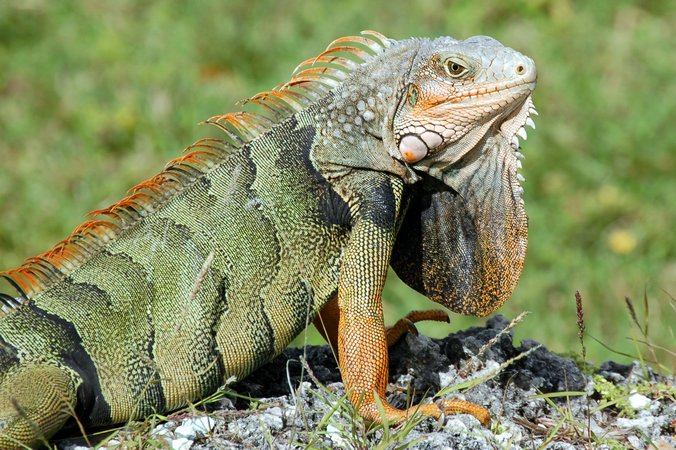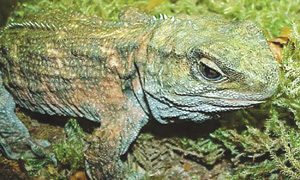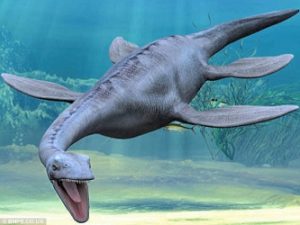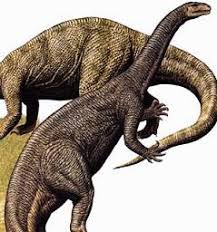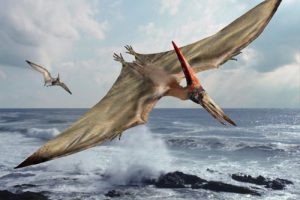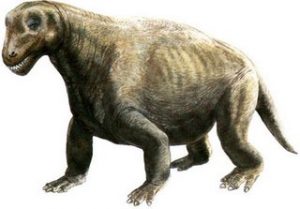Información sobre los reptiles
Los reptiles incluyen a las serpientes, los lagartos, las tortugas, los cocodrilos, el tuátara y numerosas especies extintas. Son un grupo vertebrados, animales que parecen venir de la época de mesozoica donde existían los dinosaurios pero con el tiempo les tocó adaptarse y sufrieron cambios en su cuerpo, así que muchos de los reptiles se adaptaron al agua y otros a vivir en la tierra, existen aproximadamente 7.000 mil especies. Son animales ectodermos, es decir, su actividad depende de la temperatura ambiental, suelen buscar zonas cálidas.
¿Sabías que? La cobra real puede alcanzar más de 5 metros de longitud; es la mayor serpiente venenosa del mundo. Deposita sus huevos en el medio terrestre y no en el agua, como hacen los anfibios. Las serpientes, al igual que las tortugas, los lagartos y los cocodrilos, son reptiles.
Características
- Tiene una piel seca y escamosa, lo que impide que sus tejidos se sequen. En otros casos también les sirve para defenderse y aparearse. Las escamas de los reptiles están formadas principalmente por queratina y derivan de la capa exterior de la piel o epidermis, a diferencia de las escamas de los peces que son estructuras óseas y dérmicas. La capa interior de la piel o dermis contiene muchos vasos sanguíneos y nervios, además de células con pigmentación que proporcionan a muchas especies sus vistosos colores.
- El color de la mayoría de los reptiles presenta matices verdes, pardos y grises, lo que permite a los animales adaptarse mejor a su entorno. Sin embargo, muchas tortugas, lagartos y serpientes muestran marcas brillantes en azul, verde, amarillo, naranja o incluso púrpura. Algunos reptiles, en especial los camaleones y los lagartos, son capaces de cambiar el color de la piel mediante la dispersión o concentración de unas células portadoras de pigmentos denominadas cromatóforos
- Los reptiles dependen de sus sentidos para alimentarse y evitar a los depredadores. Las especies que cazan para alimentarse suelen tener los ojos en la parte anterior de la cabeza, lo que les permite tener una visión binocular.
- Muchos reptiles son carnívoros por lo que suelen presentar de dientes que le facultan para retener y dar muerte a sus presas.
- También hay reptiles que tiene doble respiración como las tortugas de agua.
- Tienen un sistema nervioso más avanzado que los anfibios.
- Como las aves, la mayoría de los reptiles nacen de huevos con cáscara que la madre deposita sobre el terreno.
¿Sabes que los reptiles toman el Sol para entrar en calor? Lo hacen porque son animales de sangre fría.
Tipos de reptiles
Rincocéfalos
Son similares a los lagartos, diferenciándose de éstos por características osteológicas (anatomía). Los rincocéfalos o esfenodontos fueron abundantes en el triásico y el jurásico, pero hoy están todos extintos, a excepción del tuátara de Nueva Zelanda.
Escamosos
Este representado por lagartos, serpientes y culebrillas ciegas, constituye el mayor grupo de reptiles vivientes e incluye el 95% de todas las especies vivas.
Se divide en tres subórdenes: el suborden Lacertilios o Saurios (los lagartos), el suborden Anfisbénios (las culebrillas ciegas), y el suborden Serpientes. Los lagartos aparecen por primera vez en el registro fósil en el pérmico, las serpientes a finales del cretácico y las culebrillas ciegas a principios del cenozoico.
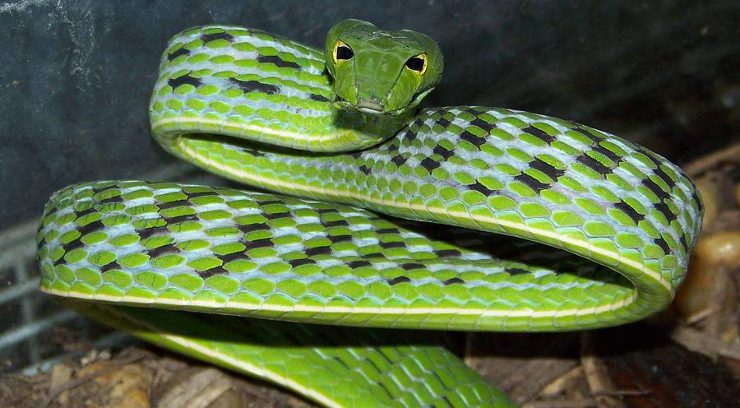

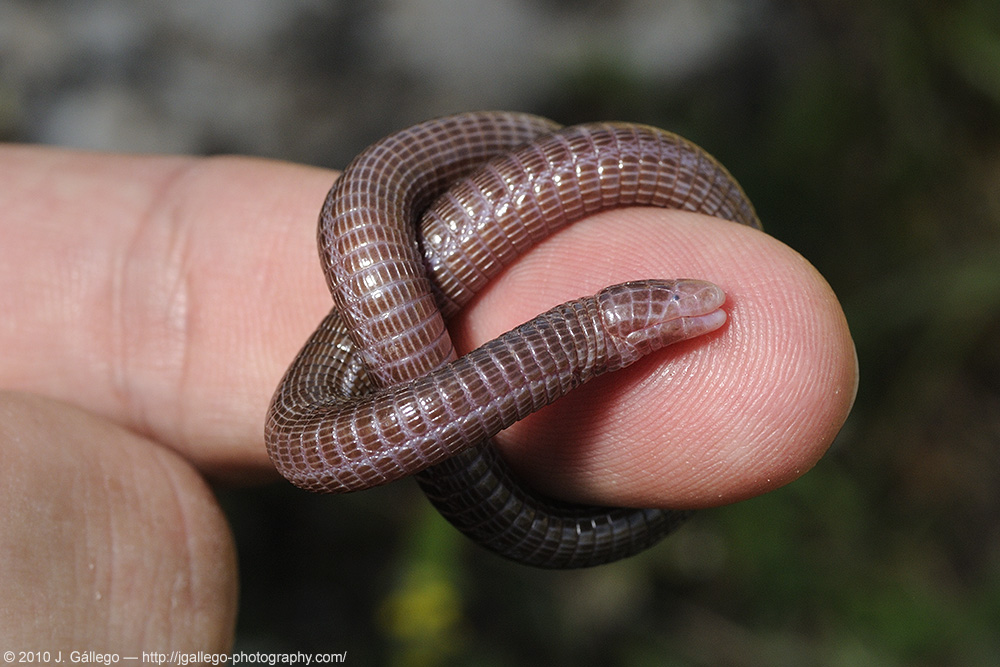
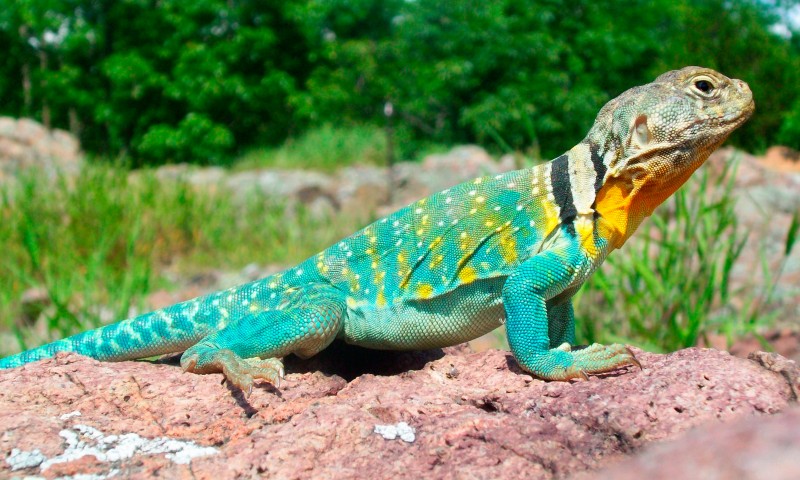
Testudines
Este tipo de reptil se ha diferenciado de los demás reptiles en el triásico, y en nuestros días comprende a las tortugas marinas y a las tortugas terrestres. Se caracterizan porque están cubiertas de una coraza que consta de un caparazón dorsal o espaldar y un plastrón ventral. Las especies de este orden son únicas, en el sentido de que tienen costillas planas sobre las que descansa el caparazón; dado que esta coraza ósea hace que las paredes del cuerpo sean rígidas, los animales tienen que respirar utilizando un proceso similar a la deglución (paso del alimento desde la boca a la faringe y luego hasta el esófago).
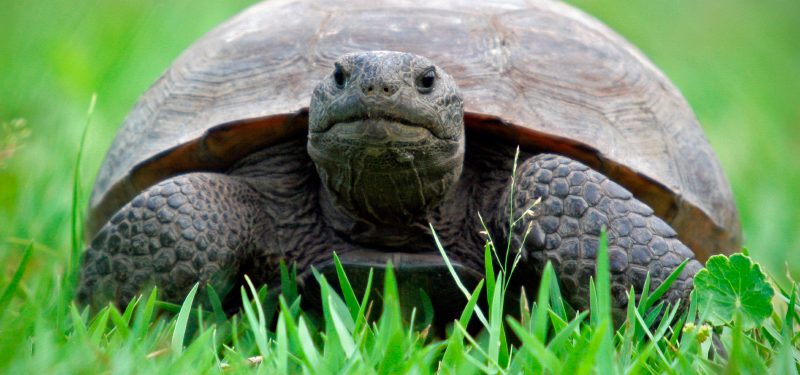
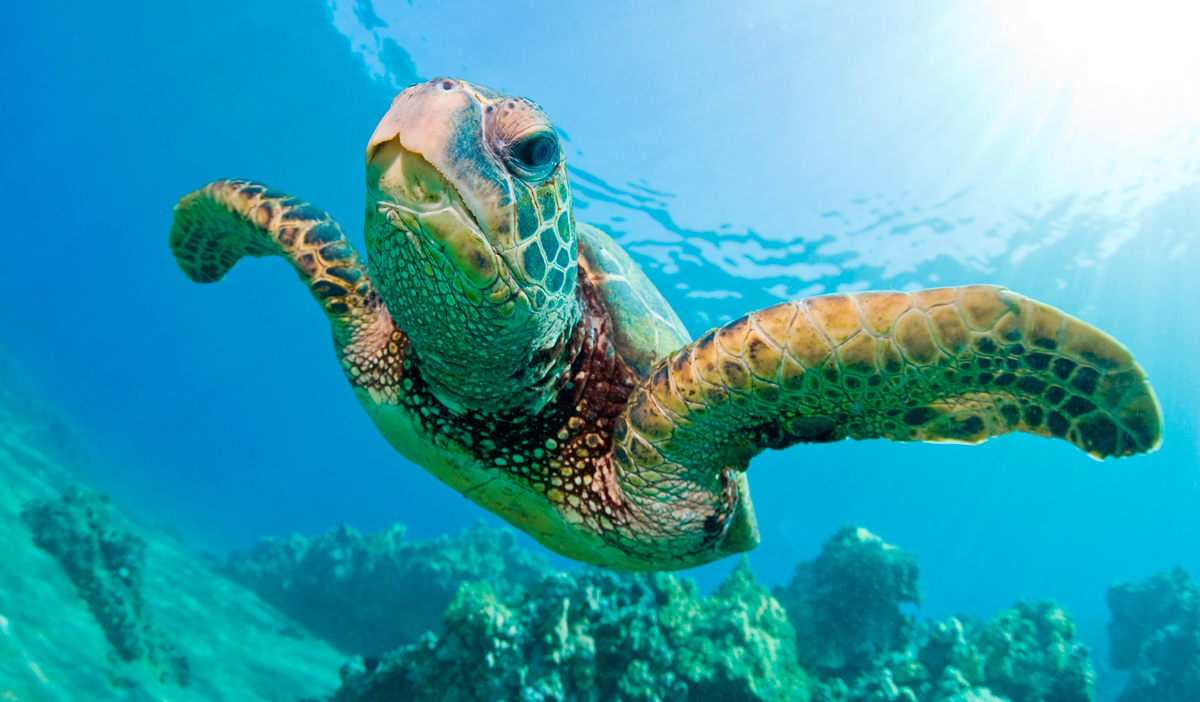
Cocodrilos
Los cocodrilos y caimanes aparecieron a finales del triásico y son los parientes vivos más próximos de los dinosaurios y las aves. Su corazón está casi totalmente dividido en cuatro cámaras; el cerebro muestra un mayor grado de desarrollo y presentan un cráneo alargado y robusto. Las especies actuales se incluyen en 3 familias: aligátores y caimanes, cocodrilos y gaviales.
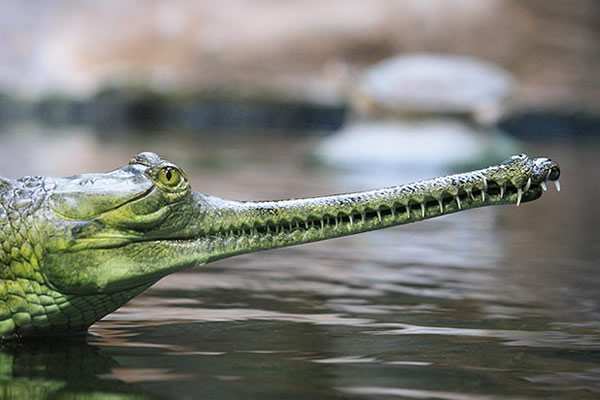
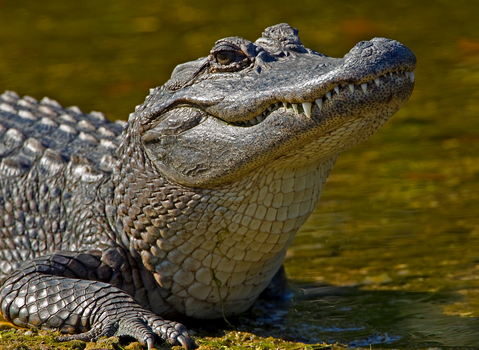
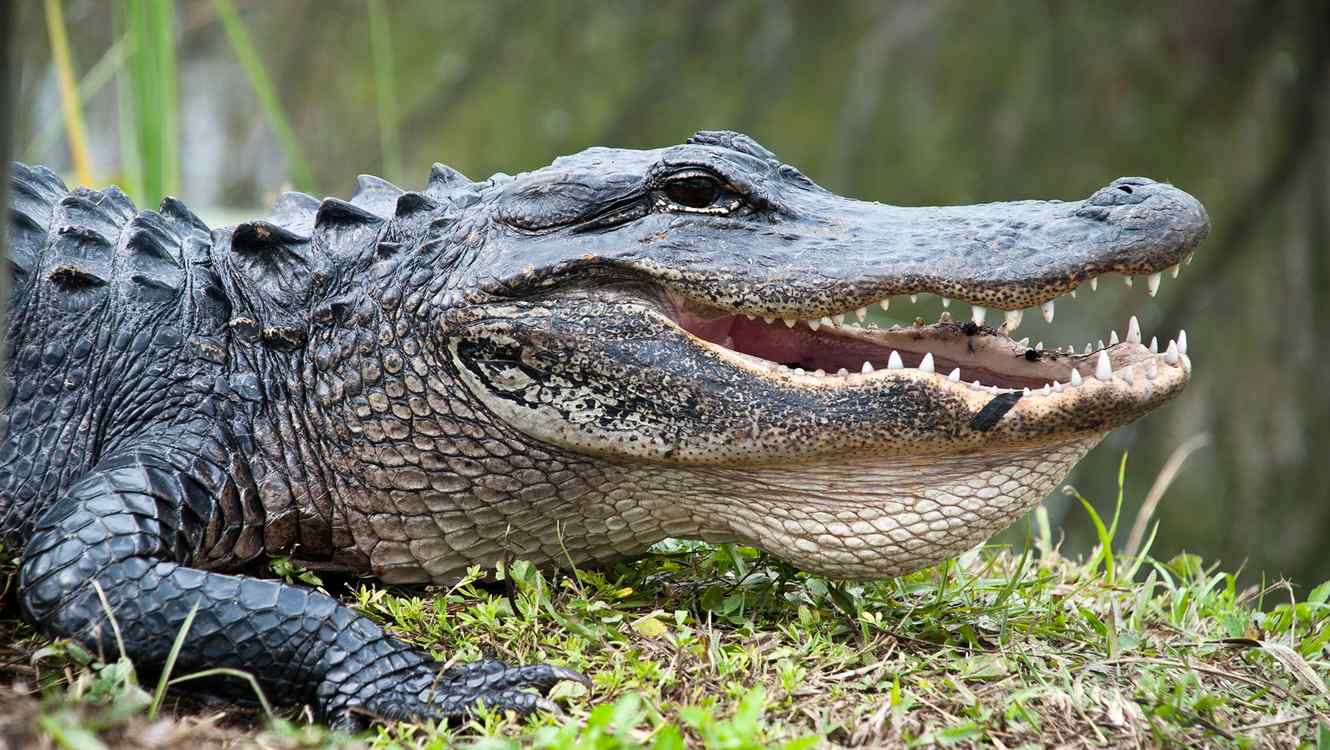
Ictiosauros
Todos los miembros de este orden, perteneciente a la subclase Diápsidos, están extintos. Los ictiosauros eran grandes reptiles marinos que tenían un cuerpo similar al de los delfines y extremidades en forma de pala o remo, que permiten alcanzar longitudes superiores a los 4 metros.
Plesiosauros
Este orden de animales extintos, incluido en el superorden dentro de la subclase Diápsidos, englobaba individuos acuáticos de cuello largo con grandes cuerpos y extremidades adaptadas para deslizarse a través del agua.
Saurisquios y Orntisquios
Los dinosaurios, reptiles de cuello y cola largos que aparecen por primera vez en los estratos correspondientes al triásico, se incluyen en los órdenes Saurisquios y Ornitisquios. Llegaron a ser comunes en tiempos posteriores hasta el final del mesozoico, cuando se extinguieron.
Pterosaurios
Son reptiles voladores extintos provistos de alas membranosas, parecidas a las de los murciélagos. El orden Pterosaurios se engloba en el superorden Arcosaurios, en el que también se sitúan los dinosaurios.
Terápsidos
El orden Terápsidos, perteneciente a la subclase Sinápsidos, incluye reptiles similares a los mamíferos, que vivieron durante el pérmico y el triásico. Algunos eran herbívoros y otros carnívoros. Se cree que los mamíferos descienden de esta línea.
Alimentación
Carnívoros
Hay algunos reptiles que son carnívoros estrictos, esto quiere decir que sólo se alimentan de la carne de otros animales. La mayoría combinan este tipo de alimentación con otros, pero hay dos grandes grupos de reptiles que son exclusivamente carnívoros. Se trata de las serpientes y de los cocodrilos, también están los carnívoros acuáticos como las tortugas marinas.
Insectívoros
Estos basan su dieta en la ingesta de insectos y pequeños invertebrados como arañas, moluscos y gusanos. Este grupo se conoce como reptiles insectívoros. La mayoría de ellos poseen lenguas con movimientos tremendamente rápidos para poder captar las presas fácilmente, ejemplo claro de este tipo de reptiles son las lagartijas o camaleones.
Herbívoros
También podemos encontrar reptiles que se alimentan exclusivamente de plantas y productos de origen vegetal. Son los menos numerosos, pero también cuentan con varias especies que forman conforman este grupo. Ejemplo de estos reptiles son las iguanas y lagartos.
Omnívoros
Estos tipos de reptiles tiene un punto de vista diferente que la mayoría de especies, tienen preferencia por un tipo de alimento u otro, gran número de ellas combinan diferentes tipos de alimentos y se pueden adaptar a una dieta u otra dependiendo de las circunstancias. Por eso se dice que la mayoría de reptiles son omnívoros, aunque en su dieta predominan los nutrientes de origen animal. En estos casos, ya se alimenten de pequeños vertebrados o invertebrados, tienen un aparato digestivo adaptado para tal situación.
Hábitat
Puedes encontrar reptiles en casi todos los lugares de la Tierra menos en la Antártida. Hay algunos que viven en los océanos, como muchas tortugas marinas; en agua dulce, como los galápagos y los cocodrilos, y también hay reptiles terrestres, como los lagartos y las lagartijas. Suelen vivir en lugares donde no hace demasiado frío, porque, como ya sabes, su cuerpo no produce calor, y para calentarse, toman el Sol.
Reproducción
Se reproducen mediante fecundación interna. Los machos cortejan o intentan atraer a las hembras. Algunos lagartos cambian de color para llamar su atención. El lagarto anolis macho infla su cuello para impresionarlas. La tortuga macho agita su cabeza o tocan la cara de la hembra con sus patas. Las serpientes hembra atraen a los machos expulsando una especie de perfume llamado feromona.
La mayoría de los reptiles son ovíparos, es decir, ponen huevos. Solo unas pocas especies de lagartos y de serpientes son ovovivíparas. En los animales ovovivíparos, el huevo se desarrolla dentro del cuerpo de la hembra hasta que el pequeño reptil rompe la cubierta y nace.
Casi todos los reptiles pueden valerse por sí mismos desde que nacen. Sin embargo, las crías, en especial las de las tortugas marinas, tienen muy pocas posibilidades de sobrevivir durante los primeros meses de vida. Suelen ser devoradas por aves, mamíferos, otros reptiles e, incluso, en el caso de las tortugas marinas, por tiburones. Cuando consiguen salir adelante, pueden vivir mucho tiempo.
¿Imagínate la larga vida que tienen algunos reptiles? como las tortugas que duran más de 150 años, y los caimanes llegan a vivir más de 70, de resto algunos lagartos de pequeño tamaño solo viven entre 4 y 5 años.
¡Ayuda con la sobrevivencia de estos hermosos reptiles!
Los seres humanos estamos destruyendo los lugares donde viven los reptiles. También contaminamos los ríos, los lagos y los pantanos en los que estos animales habitan. Además, son cazados y se cogen sus huevos para comer. Algunas tortugas de mar son muy apreciadas para preparar sopa. Ciertas tortugas y otros reptiles se capturan para venderlos como mascotas. También se cazan los grandes lagartos, las serpientes y los cocodrilos para aprovechar su piel, que sirve para hacer bolsos, cinturones, zapatos y carteras. Esto ha hecho que muchas especies de reptiles estén en peligro de extinción. Por ello, en muchos países hay leyes que prohíben capturar ciertas especies, para impedir que desaparezcan.

